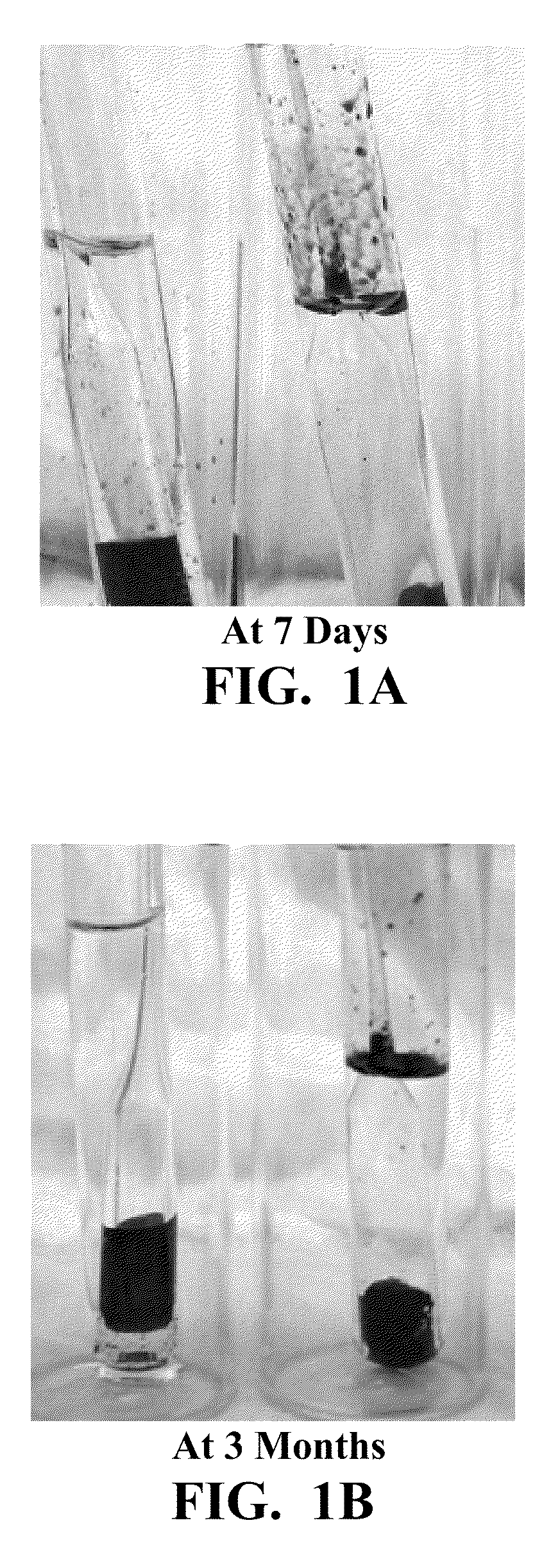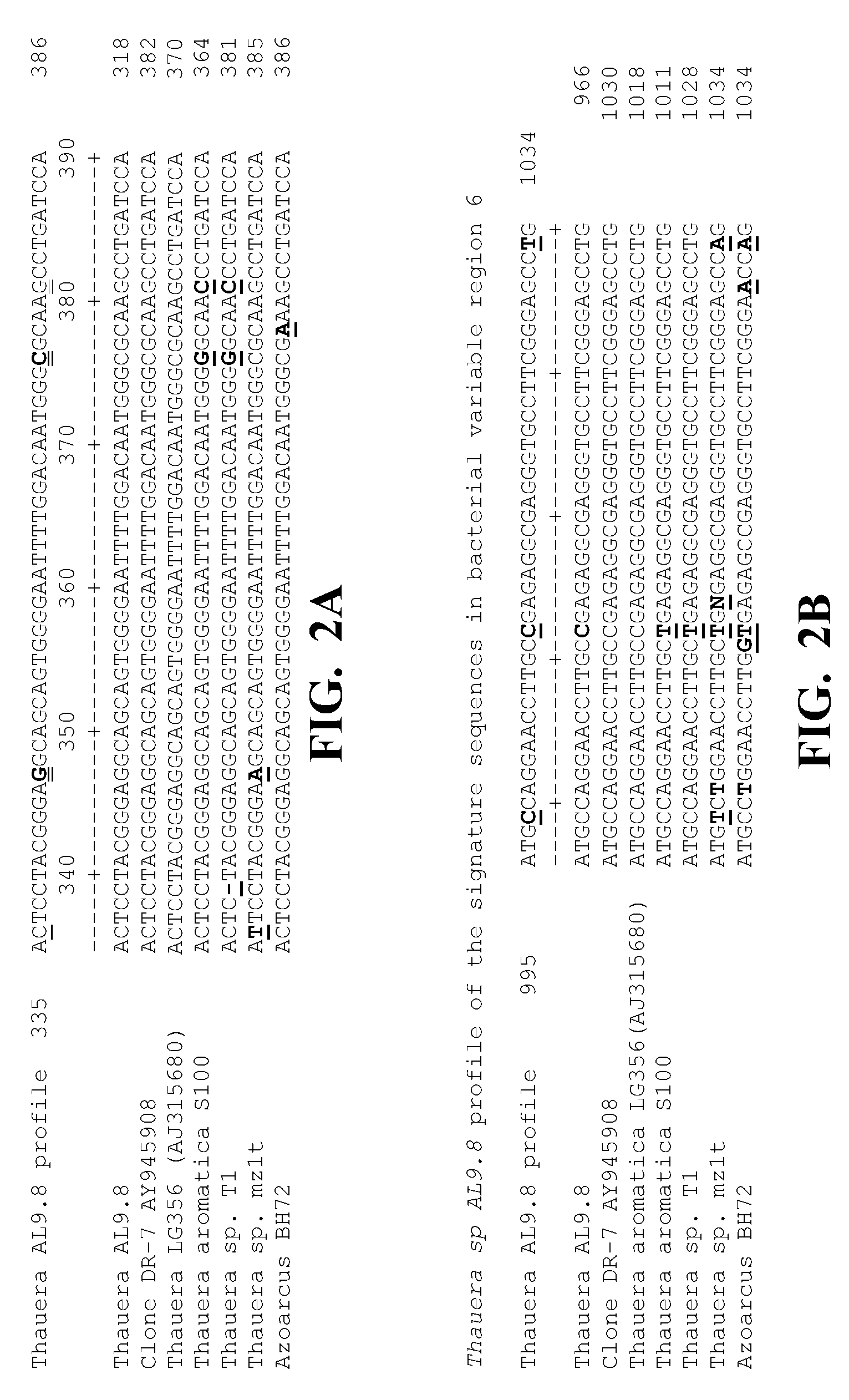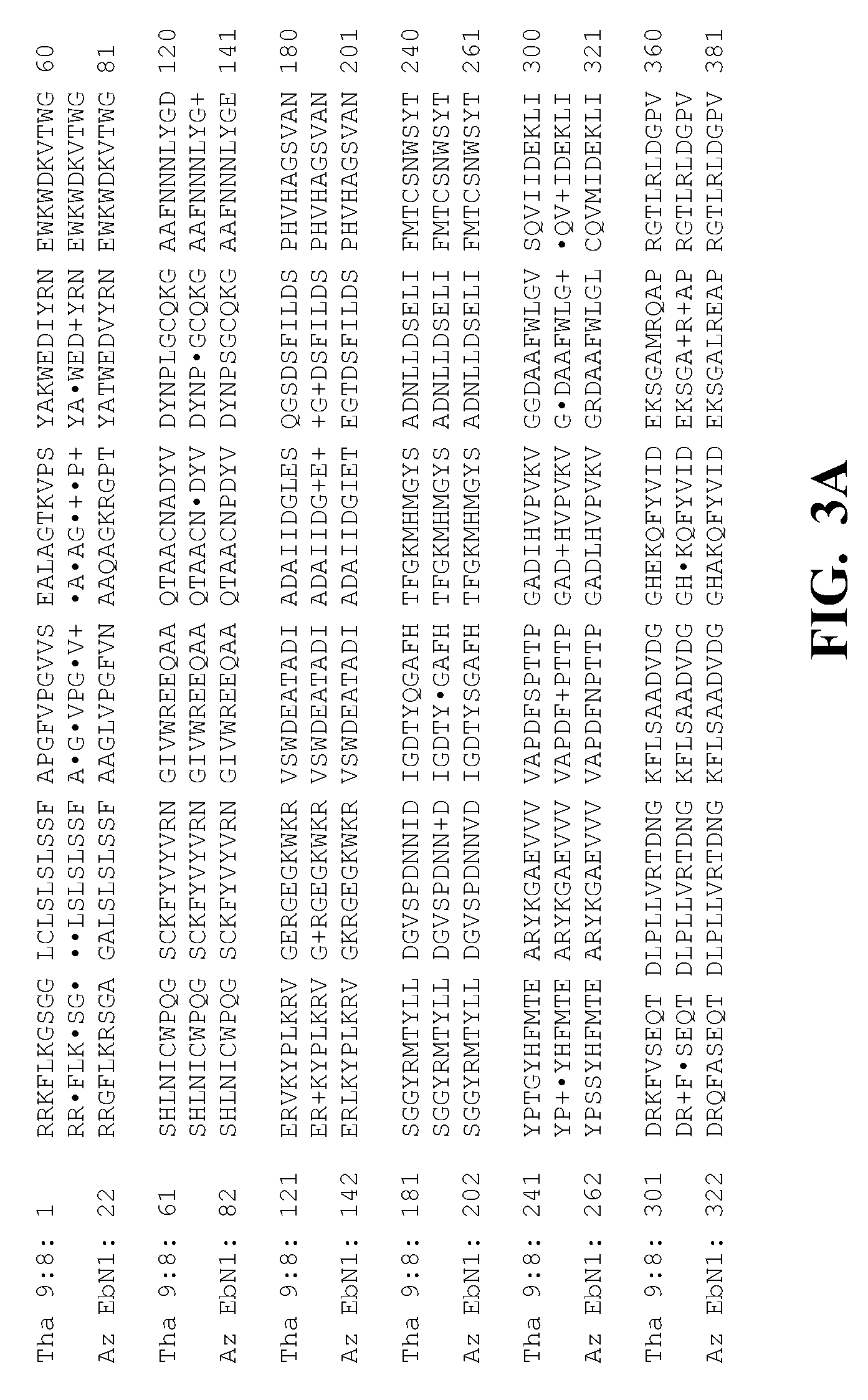Identification, characterization, and application of Thauera sp. AL9:8 useful in microbially enhanced oil recovery
a technology of thauera sp. al9 and microbial enhancement, which is applied in the direction of bacteria based processes, sealing/packing, and borehole/well accessories, etc., can solve the problems of essentially immobile and cannot be easily recovered by conventional primary and secondary means, and achieve the effect of improving oil recovery and bioremediation
- Summary
- Abstract
- Description
- Claims
- Application Information
AI Technical Summary
Benefits of technology
Problems solved by technology
Method used
Image
Examples
example 1
Characterization of Bacterial Isolates Grown Anaerobically on Oil as the Sole Carbon Source
[0075]Representatives of unique colony morphologies isolated from long-term enrichment cultures growing on oil were used as the inoculum in subsequent growth studies using crude oil as the sole carbon source. Isolated colonies were screened by PCR amplification using the direct colony rDNA analysis described in the General Methods and the combination of forward and reverse primers, SEQ ID NO:1 and SEQ ID NO:2 or NO:3, followed by sequencing of their 16S rDNA. The rDNA sequence from each colony was aligned and matched with the GenBank sequence database for phylogenetic strain identification. Purified isolates of each unique strain were inoculated under anaerobic conditions into 20 mL serum vials containing a 1:2 ratio of minimal salts medium to autoclaved crude oil: 10 mL minimal salts medium (Table 4), 0.4 g / L sodium nitrate with 5.0 mL of autoclaved crude oil. The medium was deoxygenated by s...
example 2
Screening of Single Colony Bacterial Isolate for Enhanced Oil Release
Microsand Column
[0079]The isolated bacterial strain Thauera strain AL9:8 was examined for its ability to release oil from sand in a visual oil release assay using the microsand column described above. Inocula from Thauera strain AL9:8 was grown in the minimal salts medium listed in Table 4 using sterilized crude oil as the carbon source until turbidity was observed. The cell density of each species was measured at OD550. All operations for preparation of the microsand columns, inoculation and growth were done in an anaerobic chamber using sterile techniques. The microsand columns (filled with oil-saturated sand as previously described) were placed in each glass tube, with the tapered neck of the Pasteur pipettes pointing up. A four mL aliquot of the inoculum was added to the 13 mm glass tubes either directly or diluted 2:2 to a final 4.0 mL volume with minimal salts medium. The outer vials were sealed in the anaero...
example 3
Identification of Genes Sequences Involved in Anaerobic Oxidation of Aromatic Compounds and Hydrocarbons
[0085]The genomic DNA of several purified strains belonging to either the Thauera or Azoarcus genera was screened for the presence of bssA, bcrA and ebdA genetic elements known to be involved in the anaerobic catabolism of mono-aromatic compounds. To assay for bssA, bcrA, and ebdA genes, genomic DNA was prepared from Thauera strain AL9:8, other isolated Thauera strains and an isolated Azoarcus strain, which had all demonstrated capability of growth using crude oil as their sole carbon source under anaerobic denitrifying conditions. The cells were concentrated from 10 mL of three-day-old cultures grown in modified R2A liquid medium (Table 9) containing 0.4 g / L NaNO3. An aliquot of extracted DNA was electrophoresed on a 0.8% agarose gel in order to ascertain the quantity and quality of extracted DNA. Genomic DNA thus obtained from all strains was then subjected to PCR 16S rDNA typin...
PUM
| Property | Measurement | Unit |
|---|---|---|
| concentration | aaaaa | aaaaa |
| concentration | aaaaa | aaaaa |
| temperature | aaaaa | aaaaa |
Abstract
Description
Claims
Application Information
 Login to View More
Login to View More - R&D
- Intellectual Property
- Life Sciences
- Materials
- Tech Scout
- Unparalleled Data Quality
- Higher Quality Content
- 60% Fewer Hallucinations
Browse by: Latest US Patents, China's latest patents, Technical Efficacy Thesaurus, Application Domain, Technology Topic, Popular Technical Reports.
© 2025 PatSnap. All rights reserved.Legal|Privacy policy|Modern Slavery Act Transparency Statement|Sitemap|About US| Contact US: help@patsnap.com



